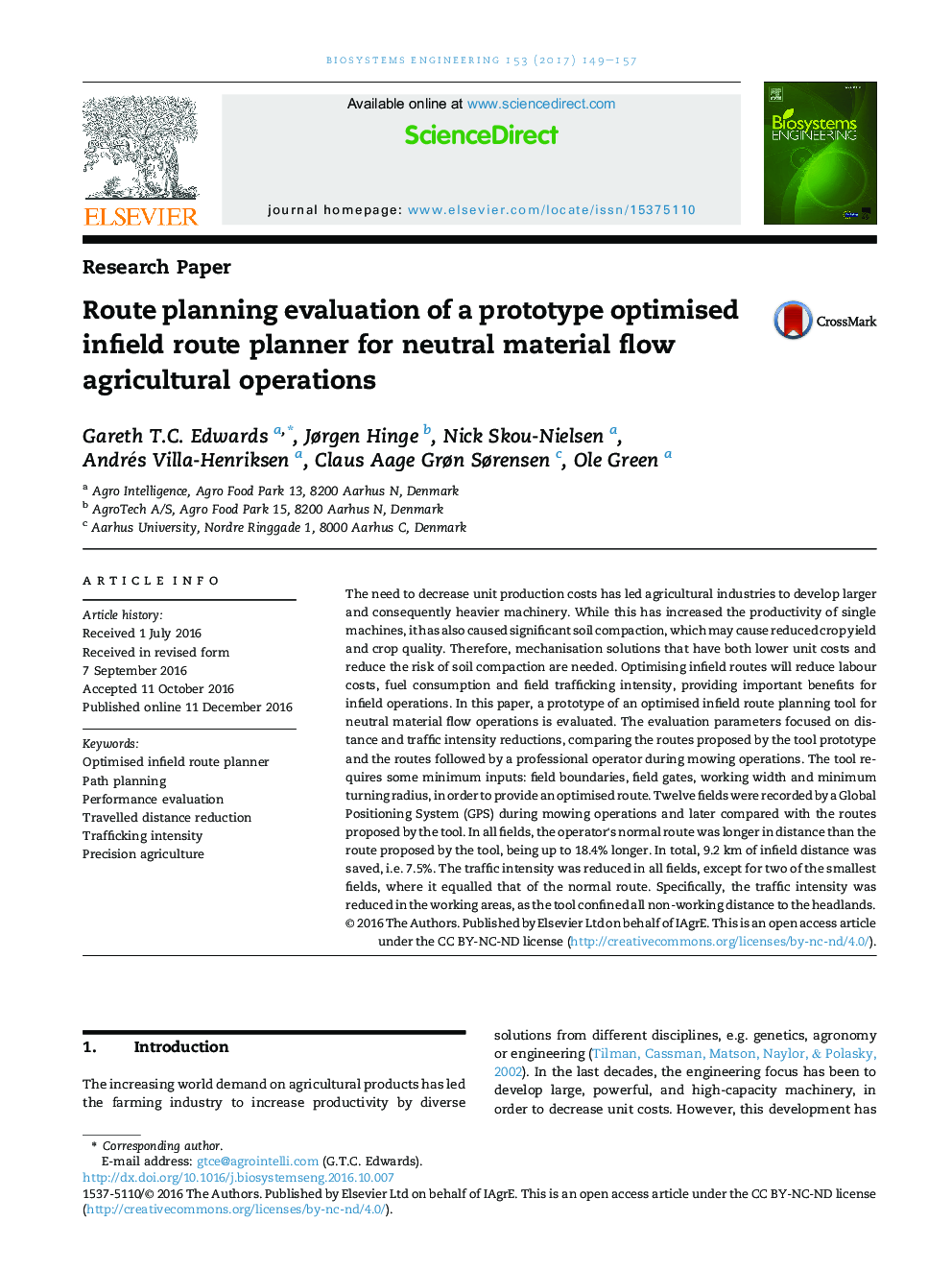| Article ID | Journal | Published Year | Pages | File Type |
|---|---|---|---|---|
| 5471935 | Biosystems Engineering | 2017 | 9 Pages |
Abstract
The need to decrease unit production costs has led agricultural industries to develop larger and consequently heavier machinery. While this has increased the productivity of single machines, it has also caused significant soil compaction, which may cause reduced crop yield and crop quality. Therefore, mechanisation solutions that have both lower unit costs and reduce the risk of soil compaction are needed. Optimising infield routes will reduce labour costs, fuel consumption and field trafficking intensity, providing important benefits for infield operations. In this paper, a prototype of an optimised infield route planning tool for neutral material flow operations is evaluated. The evaluation parameters focused on distance and traffic intensity reductions, comparing the routes proposed by the tool prototype and the routes followed by a professional operator during mowing operations. The tool requires some minimum inputs: field boundaries, field gates, working width and minimum turning radius, in order to provide an optimised route. Twelve fields were recorded by a Global Positioning System (GPS) during mowing operations and later compared with the routes proposed by the tool. In all fields, the operator's normal route was longer in distance than the route proposed by the tool, being up to 18.4% longer. In total, 9.2Â km of infield distance was saved, i.e. 7.5%. The traffic intensity was reduced in all fields, except for two of the smallest fields, where it equalled that of the normal route. Specifically, the traffic intensity was reduced in the working areas, as the tool confined all non-working distance to the headlands.
Related Topics
Physical Sciences and Engineering
Engineering
Control and Systems Engineering
Authors
Gareth T.C. Edwards, Jørgen Hinge, Nick Skou-Nielsen, Andrés Villa-Henriksen, Claus Aage Grøn Sørensen, Ole Green,
